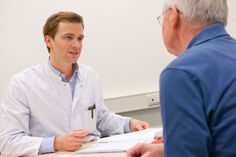Surgical Professors
Maximilian Josef von Chelius
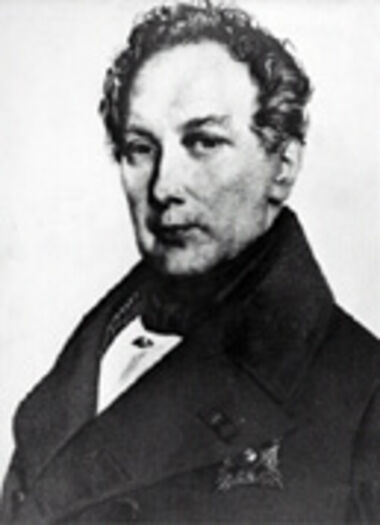
Professor 1818- 1864
* 16. January 1794 in Mannheim
† 17. August 1876 in Heidelberg
Maximilian Chelius´s scientific career was extraordinary. He started his medical studies at the age of 15, studied in Paris and Vienna, obtained his doctorate at the age of 18 and at the age of 23 became professor for general and ophthalmologic surgery. This sequence, along with the fact that his term of office lasted 46 years, sets a German if not an international world record for an academic/surgical career.
Despite the resistance of the Heidelberger anatomists who feared competitors, Chelius was appointed to hold the first chair in surgery at the University of Heidelberg.
Under his leadership the University of Heidelberg Clinic for Surgery experienced a significant nationwide upward trend. Chelius used a style of teaching which is still modern today, at the patient's bed (bed-side-teaching). One of his famous patients was Chopin, who was treated for sepsis in a finger. After his recovery he gave a concert in Chelius's home.
Cheluis had a polite but definitely firm style of leadership. In the year of his 50th anniversary as a doctor he submitted a request to retire. His finical circumstances enabled him to purchase a stately house in Heidelberger Main Street (Hauptstrasse), which is today the Kurpfälzisches Museum. In 1866 he was given hereditary aristocratic status. He passed away on 17 August 1876 in Heidelberg.
Karl Otto Weber
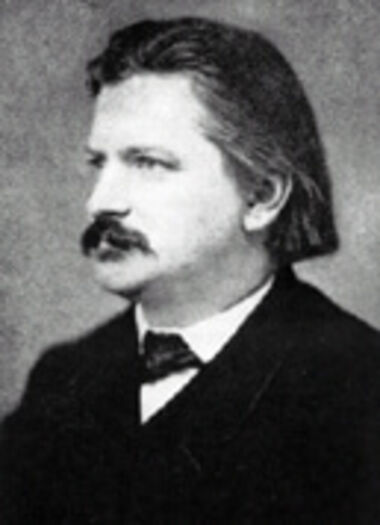
Professor 1865 - 1867
* 29. December 1827 in Frankfurt am Main
† 11. June 1867 in Heidelberg
Karl Otto Weber was born in 1827 in Frankfurt. He studied in Bonn and Paris and devoted himself not only to medicine but also to the sciences. In 1853 he became a university lecturer. As the chair in Bonn was held by someone else, he dedicated himself more and more to pathological anatomy and in 1857 became extraordinary professor and in 1862 full professor of pathologic anatomy.
In 1856 Karl Otto Weber was appointed Chelius's successor for his chair at the University of Heidelberg for Surgery. As time showed, the faculty of medicine made a very wise decision to appoint a man to hold this important chair who came from a then young and very promising field of medicine - pathologic anatomy. Weber mastered not only chemical analysis but as well all anatomical, hostologic, and genetic possibilities. At the beginning of his term of office, he separated the up to then, independent, eye clinic from the Clinic for Surgery. His stand for structural changes in the building was the main impetus for the construction of the new clinic in Heidelberg/Bergheim. Karl Otto Weber was in office for only 5 semesters of academic teachings and surgical accomplishments. He died on 11 July 1867 only just 40 years old due to diphtheria.
Gustav V. Simon
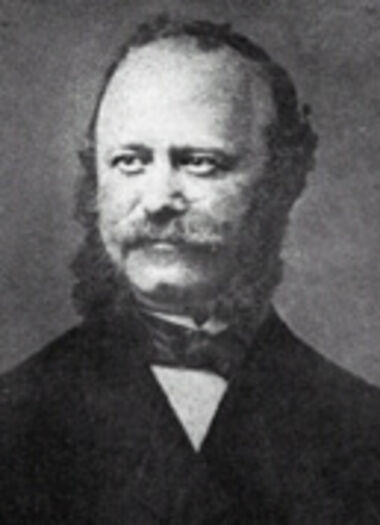
Professor 1867 - 1876
* 30. Mai 1824 in Darmstadt
† 28. August 1876 in Heidelberg
Simon, born on 30 May 1824, succeeded Karl Otto Weber for the chair in surgery at the University of Heidelberg. Gustav Simon was trained as a general practitioner and military surgeon and later as a licensed surgeon in a joint practice in Darmstadt. He gained a nationwide reputation as a urogenital fistula surgeon. As he suffered from hip difficulties, he was bed-ridden from time to time were he wrote numerous publications from his sick bed. In 1861 he was appointed professor in Rostock. 1867 he accepted the appointment to Heidelberg.
Only 2 major events of his complex life have been chosen: On 2 August 1869, after having proven with animals that one healthy kidney can take over the entire excretion process, he performed the worldwide first successful kidney removal.
Simon is considered to be the intellectual father of the German Society for Surgery. The German Society for Surgery was founded in 1872 in Berlin under the chairmanship of Bernhard von Langenbeck. Simon died in 1867- the same year as Chelius.
Vincenz Czerny
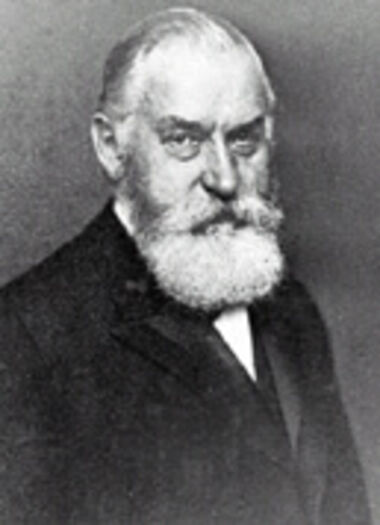
Professor 1876 - 1906
* 19. November 1842 in Trautenau
† 3. October 1916 in Heidelberg
Vincenz Czerny, born on 19 November 1842, succeeded Gustav Simon for the chair in surgery at the University of Heidelberg. Vincenz Czerny was considered to be one of the most prominent and progressive personalities at the turn of the 19th century. With his studies in Prague and Vienna he gained a wide knowledge in the field of the natural sciences. His clinical education began as an internist and he was lent out to the Billroth'shce Clinic in Vienna on a trial basis. Under the mentorship of Billroth and through animal experimentation of esophagus and larynx surgery he entered the ranks of a surgeon. In 1871 Czerny became a university lecturer and in the same year he was appointed professor for surgery at Freiburg.
In 1877 Czerny was appointed to be head of the newly built clinic in Heidelberg. In his term of office general anesthesia and asepsis had already been developed. His intensive experimental programs were significant in the scientific development of practical surgery. He described numerous standard operations for the esophagus, stomach and urogential region as well as in the field of gynecology. Czerny was actively supported by his assistant medical director and pioneer Hans Völcker, who performed numerous operations on himself, (Selbsteingriffe), in expanding the significance of Heidelberg in the field of surgery. He turned down 3 offers from Prague, Würzburg, and Vienna. His yearly reports except for a few are to this day standard in the Heidelberg Clinic. Czerny resigned in 1906 in order to dedicate himself to the creation of the first institute for cancer research, Czerny died just before he turned 75 in 1916 as a result of radiation induced Leukemia.
Albert Narath
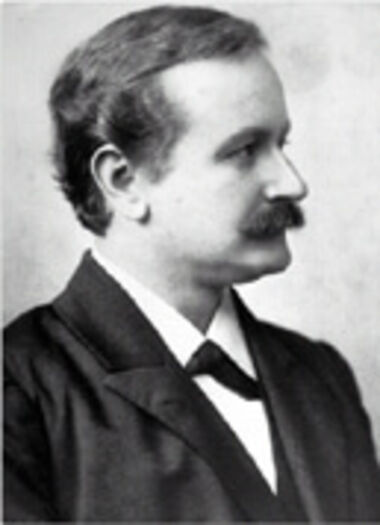
Professor 1906 - 1910
* 13. September 1864 in Wien
† 15. August 1924 in Heidelberg
Albert Narat succeeded Czerny for the chair at the University of Heidelberg Clinic for Surgery. Narat, born on 13 September 1864, became known as an anatomist and for his studies of the bronchial structure and various forms of hernias. His accomplishments as a surgeon cover many areas and have no main area of focus. His publications concern themselves with stomach operations, intestinal bypasses, retroperitoneal lymph cysts, development of an artificial larynx, varicocele surgery, pneumatocele parotid, and omentumplasty.
Narat only ran the Heidelberg Clinic for a few years. In 1910, at the age of 45, he had to resign from his office for reasons of health. He used the following years to publish further scientific publications. He died on 14 August 1924 in Heidelberg
Karl Maximillian Willhelm Wilms
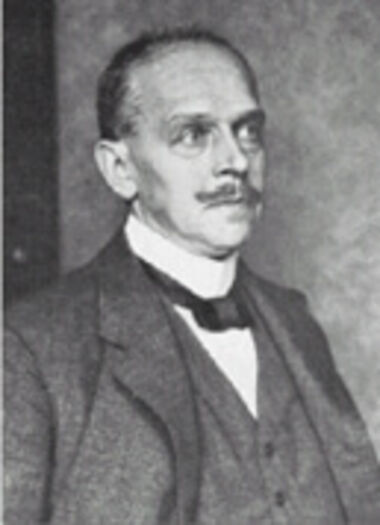
Professor 1910 - 1918
* 5. September 1867 in Hünsdorf
† 14. Mai 1933 in Heidelberg
Max Wilms, born on 5 November 1867, originally planned to study law. After only one semester, he switched to medicine, which he found more interesting. After his PhD. in Bonn with a doctorate thesis about esophagus resection, he found his was to surgery through pathological anatomy. In this period in Giesen he wrote the monograph concerning mixed tumors, which caused quite a sensation. Wilms created a simple mercury manometer for measuring the pressure in the spinal canal, the forerunner to the modern intracranial pressure monitoring probe.
In 1899 Wilms became famous through his work "Ileus aus chirugischer Sicht" ("Ileus from the Viewpoint of Surgery"). In 1907 he was appointed professor in Basel. In 1910 he accepted his appointment as Narat's successor at the University of Heidelberg Clinic. This was followed by numerous publications about his projects. His main area of focus was radiology diagnostics as well as radiation therapy for tumors and tuberculosis. He introduced lung compression after partial rib resection for the treatment of tuberculosis. His textbook was reprinted 7 times and has been translated into 6 languages. Wilms had to run the clinic in the difficult times during World War I. On 14 May 1918 Wilms died of diphtheria, which he caught while treating a French prisoner of war.
Eugen Enderlen
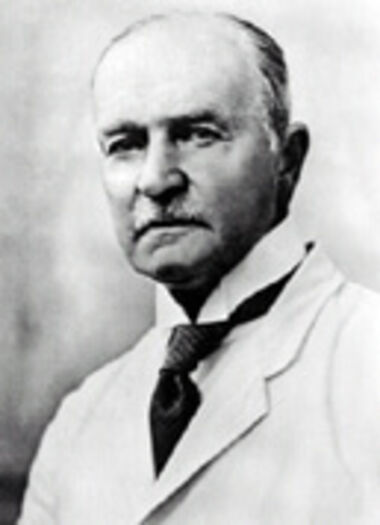
Professor 1918 - 1933
* 21. January 1863 in Salzburg
† 7. June 1940 in Stuttgart
Engen Enderlin, born on 21 January 1863, studied medicine in Munich. His dissertation on pathologic germs seeping through the intact lung surface based on anthrax spores marked the beginning of his great lifetime scientific works. In 1895 he became a university lecturer in Greifswald, without having to submit a qualifying postdoctoral thesis as he already had written numerous outstanding publications. In 1899 he was appointed as extraordinary professor and accepted in 1904, at the age of 41, an appointment to Basel. In 1908 he transferred to the University of Würzburg Clinic. From this time there are numerous clinical and animal-experimental studies concerning vascular and organ transplantation, blood transfusions, ileitis and appendicitis. During World War I Enderlen was a general practitioner and scientifically grounded the obligatory emergency laparotomy for all gun shot wounds of the abdomen.
In 1918 he became professor for surgery at Heidelberg. During his term of office, many import accomplishments and many scientific reports in collaboration with the eminent Heidelberg internist Ludolf Krehl were achieved. Together with Krehl he preformed denervtion operations on the heart, and blockades of the stellate ganglia. He clinically applied the transplantation of vessels and corpse bones. Apart from innovative techniques in esophagus surgery he established differential operation indications for ulcer and gall stone ailments, which for the most part still are relevant today. In 1932 Enderlen resigned. With a serious heart condition he moved to Stuttgart. On 7 July 1940 he died tragically after a palliative operation for a stenosing sigmoid carcinoma which had caused intestinal blockage.
Martin Kirschner
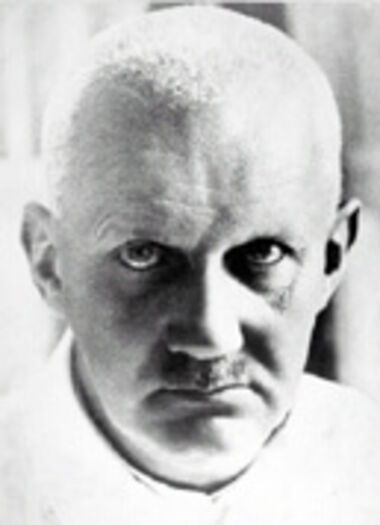
Professor 1933 - 1942
* 28. October 1879 in Breslau
† 30. August 1942 in Heidelberg
Martin Kirschner was born on 28 October 1879 in Breslau to a family of surgeons. He started his medical studies in Freiburg and transferred later to Strassburg where he graduated with a paper on syringomyelia and tabes dorsalis. He started his career as a doctor as an internist. In 1908 he started his career as a surgeon in Greifswald near Payer. In 1911, after transferring to Königsberg, he became a university lecture with his paper about tendon and fascia transplantation. In 1916 he held the chair in surgery at Königsberg. There on 18 March 1924, for the first time in the history of surgery, he succeeded in performing an embolectomy from the pulmonary artery. In 1927 he accepted an appointment to the University of Tübingen. He turned down the first offer from Heidelberg in 1932 as his demand for an immediate new building for the clinic was not accepted and the promise to Enderlen for the same was never fulfilled. The second offer from Heidelberg which included a binding commitment for a new clinic building was accepted by Kirschner. In 1939 he could move into the then highly modern clinic in Neuenheimer Feld. The clinic is still located there.
Kirschners field of work covered nearly all areas of surgery. His favorites were tissue transplantation, osteosynthesis (Krischner wire), esophagus surgery (Kirschner operation), Rectum table (Kirschner Tisch), and prostate surgery. He developed numerous local and regional anesthesia procedures. A further pioneer activity was in 1936 as Kirschner performed a one-sided removal of a lung lobe in an opened pleura. Special mention should be made of the writing of the Kirshner's Surgery Teachings, which today is still considered an excellent reference work.
Karl Heinrich Bauer
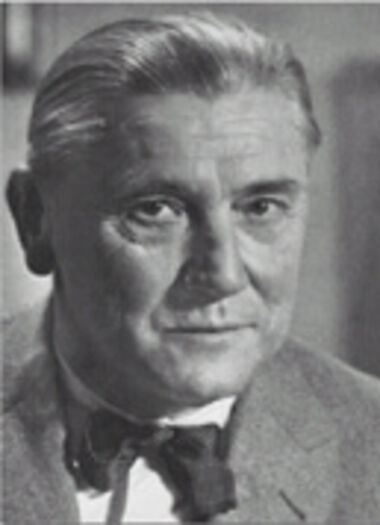
Professor 1943 - 1962
* 26. September 1890 in Schwarzdorf
† 7. July 1978 in Heidelberg
K. H. Bauer was born on 6 September 1982. After his medical studies in Erlangen, Heidelberg and Munich, he sat his exams and was awarded his doctorate in Würzburg. After World War I, where he was a combat unit doctor, he went to Aschoff at the Institute for Pathology in Freiburg. There he received his first qualification for his human genetic and constitutional biological studies, which problematic accompanied him throughout his whole life. In 1919 he went to Göttingen for surgery studies and in 1923 became a university lecturer. In 1928 he published his first comprehensive cancer theories. He was appointed as professor in Breslau in 1933. There accident and war surgery made up his main focus of research.
On 1 January 1943 K. H. Bauer took over the new Heidelberg Clinic. After the war when the Americans marched into Heidelberg, the university was closed down. On 15 August 1949, under Bauer's leadership and with new statutes, the University of Heidelberg was the first German university to re-open. Bauer was the first director of the new university.
Bauer expanded his research of tumors in accident surgery in Heidelberg. Already in 1949 the first publication about oncological research problems and results titled "Das Krebs Problem" (The Cancer Problem) came out. In 1963 a further monograph which gave him an international reputation in the field of oncology was published. Today K.H. Bauer is considered one of the forerunners of modern oncology. His part in the founding of the German Cancer Research Center in Heidelberg in 1968 was the peak of his life's work.
K.H. Bauer is also considered as the doyen of modern rescue work. The establishment of a so called clinomobile, a surgical operation room on wheels, was unique to Germany. In continuous development of this system, todays Rendozvous-Rettungssystem (ambulance meets doctor's car) was invented and put to use with our Emergency Doctor's Vehicle HD10, which was an example internationally in the field of rescue.
K.H. Bauer became a professor emeritus in 1962. On 7 July 1978 he died as a result of prostate cancer. A bust of him can be found in the corridor connecting the surgical wards 1 and 2.
Fritz Linder
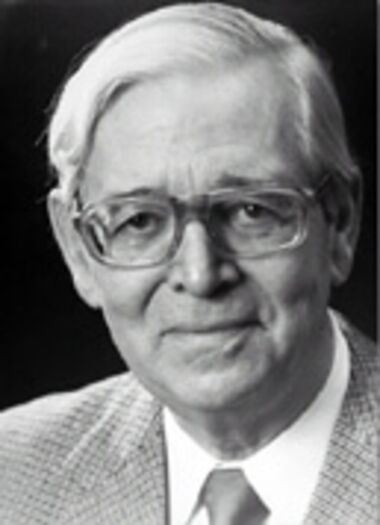
Professor 1962 - 1981
* 3. January 1912 in Breslau
† 10. September 1994 in Heidelberg
Fritz Linder was born on 3 January 1912 to palatine parents in Breslau. He studied medicine in Freiburg, Bristol, and Breslau where he in 1936 sat the exams and was awarded his doctorate (PhD). As a student he proved himself as a track and field athlete. He won several 400 meter races and his gold medals won for shot put and javelin at the student championships in Wembley Stadium for the University of Bristol, helped him to academic connections in the Anglo-Saxon regions.
As preparation for surgery studies, he was at the Institute for Pathology and Anatomy in Breslau and at the Medical Clinic in Frankfurt, where he primarily worked on experiments concerning questions about renal Goldblatt hypertension. In 1938 his career as a surgeon began under Bauer in Breslau, whom he followed to Heidelberg in 1945 after working for six years as a military doctor. In 1951 he became professor at the Free University of Berlin. Through continual contact with the Anglo-American medicine, especially Professor Bill Longmeyer from Los Angeles, a leading heart and vascular surgery center could be established there. In 1962 he was appointed to Heidelberg.
Under his leadership, the structural development of the Clinic for Surgery changed into a modern system of departments. As a part of the standard training program for promising interns, it has been required since that time, that many participate in a scientific training program abroad, usually in the USA. Linder's main area of focus during his term of office was the standardization of oncology treatment strategies. He was the head of the Heidelberg/Mannheim tumor center for many years. In 1981 Linder became a professor emeritus. A bust of him can be seen in the corridor connecting the wards 1 and 2.
Christian Herfarth

Professor 1981 - 2001
* 12. August 1933 in Breslau
Christian Herfarth was born on 12 August 1933 in Breslau and so has the same home town as his predecessors Lirschner and Linder. In 1957 after his studies in Tübingen, Vienna, and Hamburg he passed his state exams and was awarded his doctorate with suma cum laude. After completion of his internship, he started his career in surgery in 1960 with Schweiger in Marburg, where he became a university lecturer in 1966. After transferring with Schweiger to Freiburg in 1968, he accepted his appointment for the chair for surgery at the University of Ulm. There he grounded his 3 main areas of focus, oncology surgery, gastroenterological surgery and endocrine surgery.
In 1981 Christian Herfarth was appointed full professor for surgery at the University of Heidelberg. Under his leadership, the significance of Heidelberg as a Center for Oncology greatly increased. As well, in the fields of chronic inflammatory intestinal diseases and endocrinal surgery, the reputation of Heidelberg as a regional reference point grew. Last but not least, through his initiative, Heidelberg became the Transplantation Center of Baden-Württemburg and the kidney transplantation program of 1967 was extended to include the liver (16 June 1987), the heart (21 June 1989), and the pancreas (21 May 1992).
One of the greatest achievements of Professor Christian Herfarth as an academic surgeon was his ability to recognize paradigm shifts in the science of surgery and provisions of medical care. He had confidence in and a commanding knowledge of surgery and surgery oriented sciences, especially when it was necessary to include new methods e.g. molecular biology, into the research repertoire of surgery. He was, therefore, able to quickly deduce technical and structural consequences from new realizations and developments for the care of surgery patients and research. In 1997/98 he became the president of the German Society for Surgery. Professor Ch. Harfarth became an Emeritus Professor on 31 September 2001. His successor is Prof. Dr. Markus W. Büchler. Professor Herfarth still functions as an advisor for the clinic, especially in structural and scientific-political questions. An emeritus office serves as contact and organization point.
Markus Wolfgang Büchler
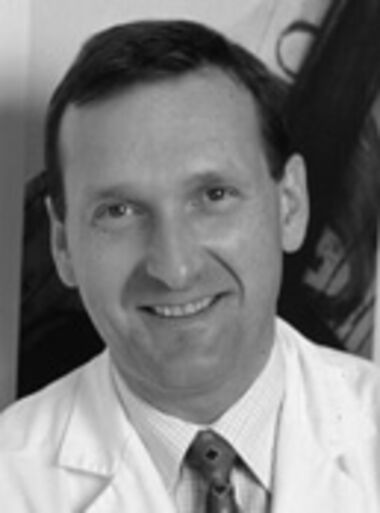
Professor since 2001
For the Curriculum vitae ofProf. Dr. Dr. h.c. Markus W. Büchler click here
